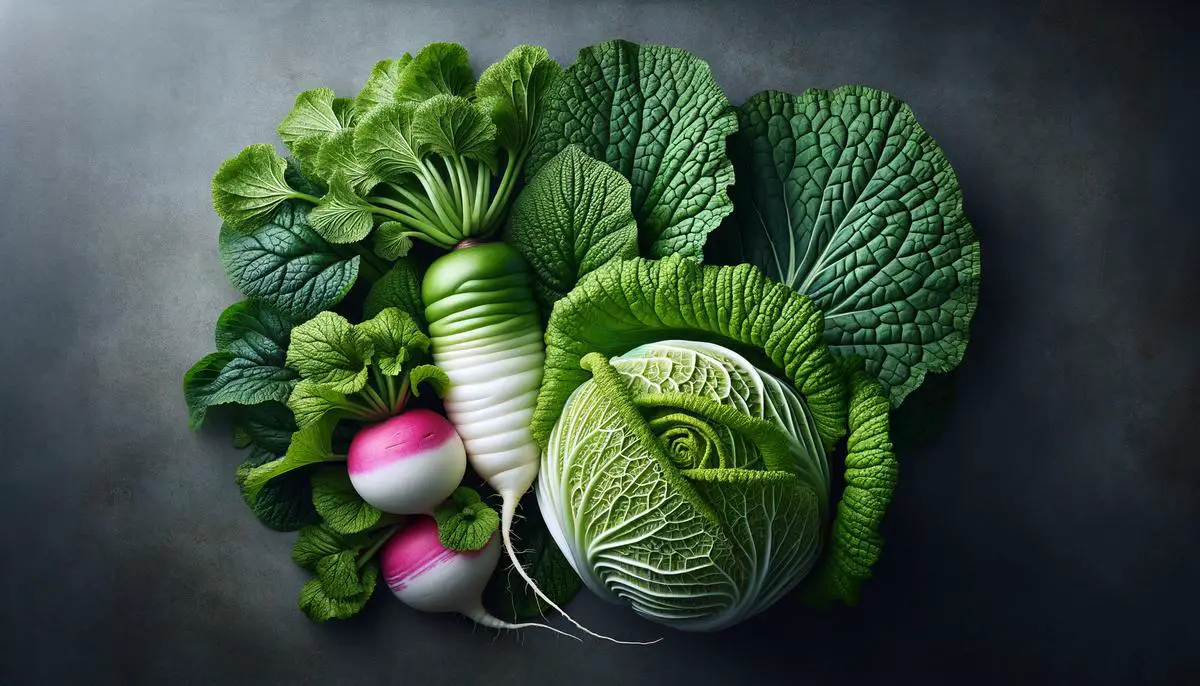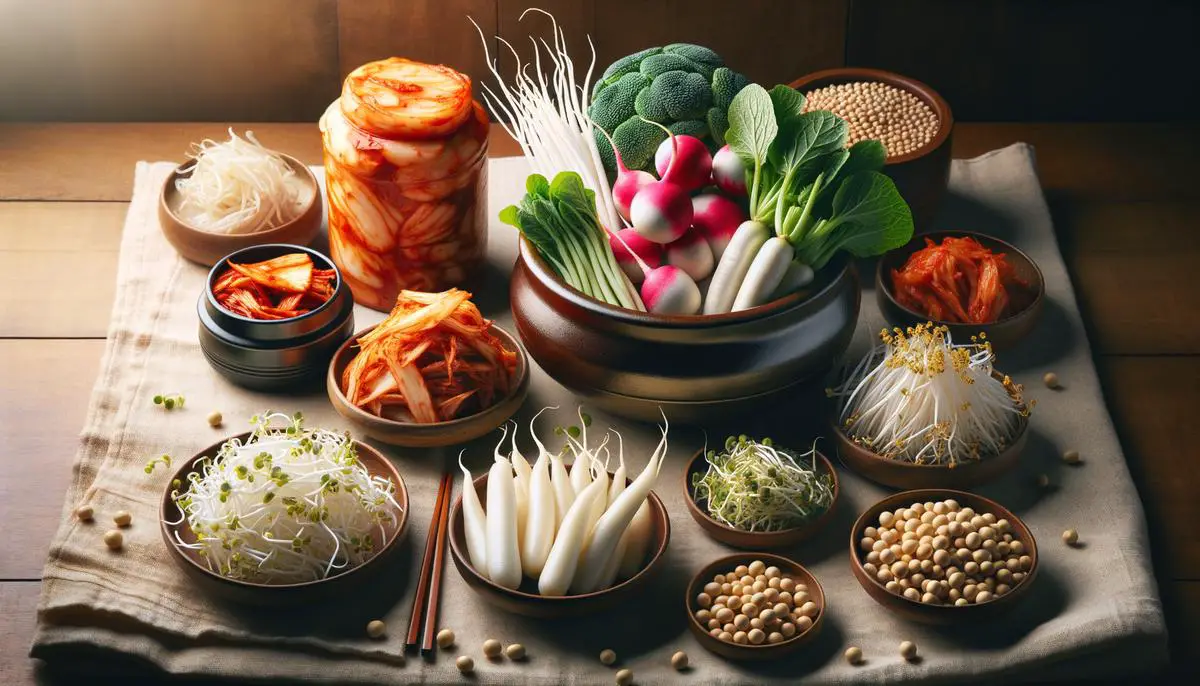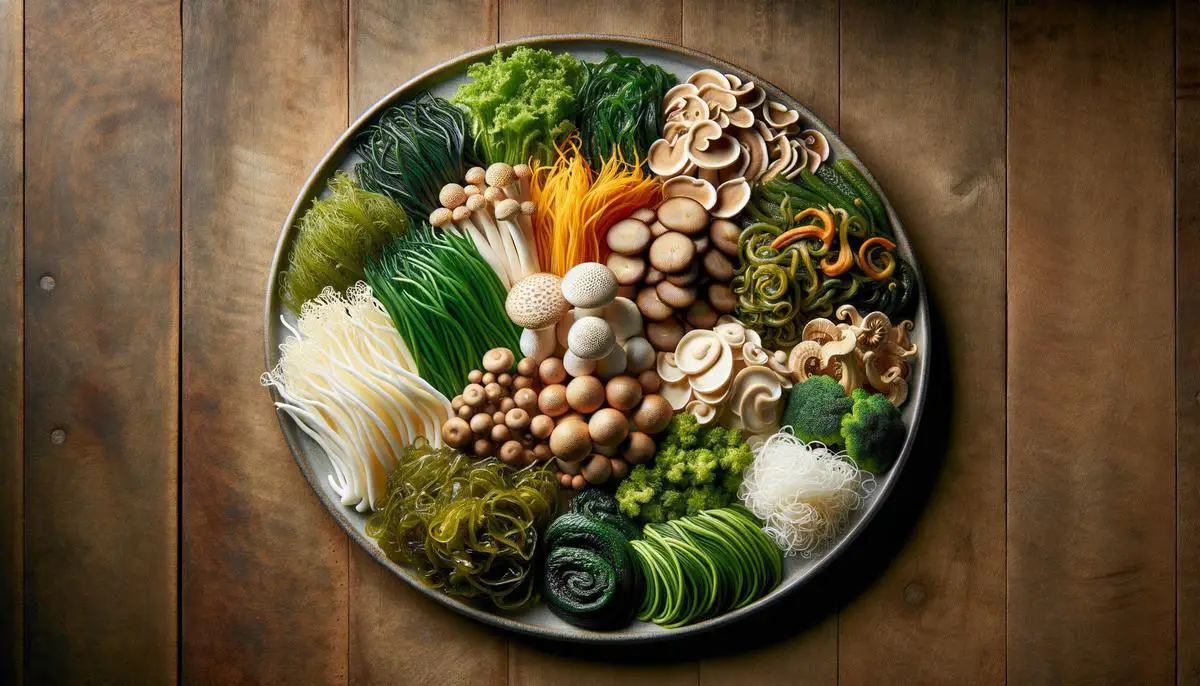
Korean cuisine stands out for its rich taste and emphasis on health, brought to life by an array of vegetables. From the essential kimchi to the nourishing seaweeds, these ingredients form the backbone of dishes celebrated for their intricate flavors and nutritious benefits. This exploration highlights the vital role vegetables play in Korean cooking, revealing how they contribute to both the culinary excellence and the well-being of those who enjoy this cuisine.
Common Vegetables in Korean Cuisine
Korean cuisine is renowned for its vibrant flavors and healthful properties, with vegetables playing a pivotal role in its culinary landscape. Central to Korean cooking are ingredients like kimchi (fermented cabbage), which not only serves as a staple side dish but also embodies the essence of Korean food culture through its complex flavor profile and fermentation technique. The reverence for vegetables extends beyond kimchi, with staples such as garlic, green onions, and Korean radishes (mu) being indispensable to the authentic flavors found in dishes ranging from the humble yet comforting kimchi jjigae (kimchi stew) to the refreshing mu namul (seasoned radish side dish).
Delving deeper, one discovers the importance of soybean sprouts and spinach, which frequently appear in bibimbap (a mixed rice dish) and various banchan (side dishes), contributing both texture and nutrients. The versatility of these vegetables is showcased in their ability to be transformed through different cooking methods – from stir-frying and blanching to fermenting. Such preparations highlight the Korean culinary philosophy that celebrates the natural taste and health benefits of vegetables. Furthermore, the addition of gochugaru (Korean red pepper flakes) and doenjang (soybean paste) to vegetable dishes introduces a depth of flavor that is uniquely Korean, blending spice, umami, and a hint of sweetness into every bite. Through these core vegetables and seasonings, Korean cooking offers a kaleidoscope of flavors and textures, making vegetables not just an accompaniment but the heart of many dishes.

Health Benefits of Korean Vegetables
Korean vegetables extend their influence far beyond just amplifying the flavor profiles of the nation’s cuisine; they are pivotal in promoting health and well-being among its consumers. Notably, the inclusion of seaweeds like kelp and nori in everyday meals exemplifies their indispensable role. These sea vegetables are laden with essential nutrients, including iodine, calcium, and vitamins A, C, and E, fortifying the immune system and supporting thyroid function. Moreover, their antioxidant properties help in combating oxidative stress, linking them to lower risks of chronic diseases. It’s this nutritional density, coupled with their low-calorie nature, that underscores their contribution to a balanced diet, reflecting the holistic health philosophy that Korean culinary practices embody.
Additionally, the dietary staples of mushrooms, varying from shiitake to enoki, enrich Korean dishes not only with their earthy flavors but also with their significant health benefits. These fungi are renowned for their beta-glucans, compounds known for their ability to modulate the immune system. More than just immune boosters, mushrooms in Korean cuisine also contribute to cardiovascular health through their cholesterol-lowering effects. As an integral part of the Korean diet, these vegetables symbolize the seamless integration of taste and nutrition. Coupling these elements with the practice of fermenting not only enhances their flavor but also boosts gut health by increasing the presence of probiotics. The meticulous selection and utilization of vegetables in Korean cooking thus serve as a testament to the cuisine’s deep-rooted inclination towards nurturing the body, aligning with a broader commitment to wellness and prevention.

In the grand tapestry of Korean cuisine, vegetables emerge not just as mere ingredients but as cultural and nutritional icons, merging age-old traditions with the pursuit of health. The careful preparation and usage of these vegetables showcase a culinary philosophy where taste and health go hand in hand. As we appreciate the depth of flavors and the myriad benefits these vegetables offer, we gain a deeper understanding of Korean cuisine’s unique ability to nourish the body while delighting the palate. Through this lens, Korean cooking teaches us the importance of respecting and celebrating the natural bounty of our gardens for a richer, more healthful life.



